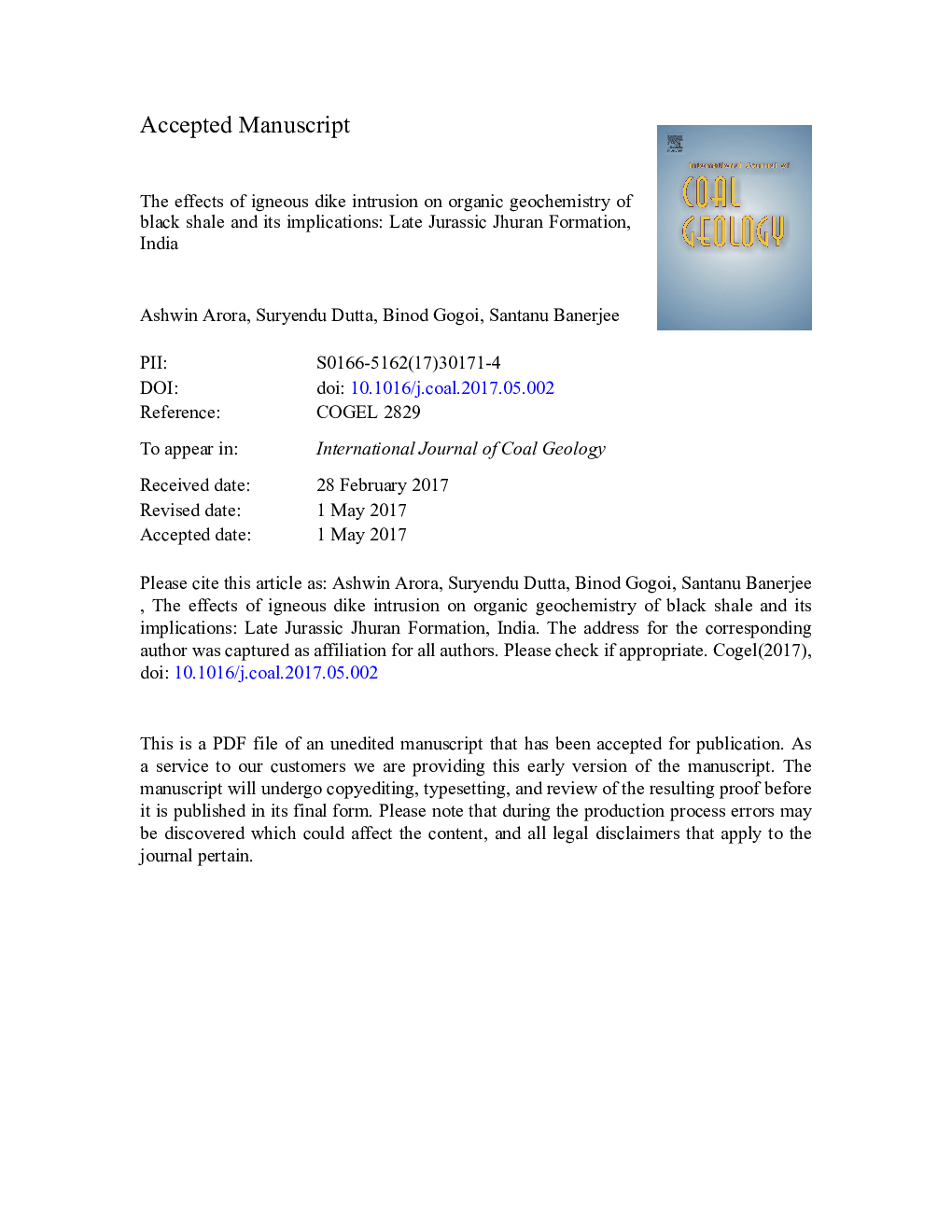| Article ID | Journal | Published Year | Pages | File Type |
|---|---|---|---|---|
| 5483708 | International Journal of Coal Geology | 2017 | 55 Pages |
Abstract
This study documents the effects of igneous dike intrusion on organic geochemical parameters of a shallow-marine originated, Late Jurassic black shale (av. TOC = 2.2 wt%) in the Kutch rift basin in western India. The dike intrusion forms extremely to mildly altered, meter-scale zones around them. The primary wrinkled micro-texture of the shale is lost completely, and organic matter is charcoalized in the extremely altered zone recording a Rock-Eval Tmax > 458 °C. Immature type-III kerogen dominating the unaltered shale records abundant coniferal biomarkers such as retene, ent-beyerane, phyllocladane, ent-kaurane, abietane, labdane and norisopimarane, besides n-alkanes, hopanes and steranes. The transition from the unaltered (Rock-Eval Tmax < 432 °C) to the altered zone involves a decrease in carbon preference index (CPI), pristane/n-C17, phytane/n-C18, C30 hopane/C29 ααα-sterane and gradual increase in C29 diasterane/sterane, trisnorneohopane/trisnorhopane (Ts/Tm), Ts/C30 hopane, C29/C30 hopane and C29 20S/(20S + 20R) sterane ratios. Although most saturate biomarkers disappear in the extremely altered zone, it records a high abundance of thermogenic polycyclic aromatic hydrocarbons (PAHs), commonly found in palaeo-fire deposits. Besides the PAH ratios, methylphenanthrene index-1, pristane/phytane, CPI and C29/C30 hopane ratios are found to be influenced significantly by thermal maturation in the extremely altered zone. The fluoranthene/(fluoranthene + pyrene) ratio correctly distinguishes different intensities of combustion products, while other PAH ratios behave differently at the immediate contact of the dike. Pr/Ph ratio may correctly interpret the redox condition up to a Rock-Eval Tmax ~ 520 °C, while it is ineffective at high maturity. The results of the investigation are significant for the assessment of stability of biomarkers in highly matured source rocks, recording potential redox-sensitive biomarkers in highly matured shales and detection of palaeo-fire deposits in ancient sedimentary succession.
Related Topics
Physical Sciences and Engineering
Earth and Planetary Sciences
Economic Geology
Authors
Ashwin Arora, Suryendu Dutta, Binod Gogoi, Santanu Banerjee,
